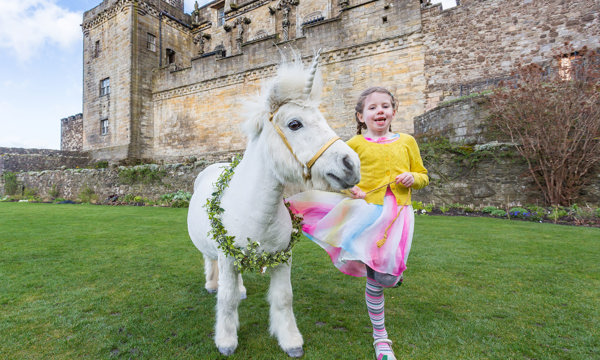As part of the highly informative kings and queens of Scotland at Stirling Castle exhibition, there was a section entitled: Dos and Don'ts of Kingship. This was a straightforward checklist for any would-be ruler, which I thought I would share with you here.
5 Dos and Don'ts of Kingship:
- Assert Your Authority: As the kingdom became more stable, kings assumed greater power and responsibility. Do confront nobles who have grown too powerful - James II was only six when he inherited the crown. He was a pawn in the hands of the Livingston and Douglas families, who used their control of him to gain power and land. At 18 the king took personal control of his kingdom, swept the Livingston's from power, and had the leading members of the family executed. But don't go too far... At Stirling Castle in 1452 James II, then 21, lashed out and murdered the Eighth Earl of Douglas when he refused to bow to his demands. Such a ruthless, unlawful elimination of his rival was very risky and caused general outcry. But James did some swift damage control. He showered traditional Douglas supporters with land grants and so neutralised the threat of a serious invasion.
- Build a Power-Base: To ensure support, kings had to involve their nobles in government and reward their loyal service with lands and wealth. Do encourage loyalty through good management - James IV exercised an inclusive style of government, giving the appearance of taking advice from a wide circle of advisors. He was a dynamic ruler, whose attractive personality allowed him to build close personal ties with his nobles. Although James IV held relatively few parliaments during his reign, the nobility had access to him which they believed gave them influence in policy-making. Don't alienate your most powerful nobles. James II was seen as remote and disengaged. He isolated many of the greater nobles, the king's traditional advisors. Instead, his inner circle consisted of a few lower-born favourites. The nobles were rarely consulted by the king, whose pro-English policies were particularly unpopular. Discontent grew. Eventually the nobles launched a rebellion which ended with James's death after the Battle of Sauchieburn in 1488.
- Wage War: Kings need to be commanding military leaders, in whose service fame, fortune and honour could be won. Do set an example for your followers - Robert the Bruce has the reputation for being Scotland's most successful warrior king. He was the military role-model of medieval kingship and fought, against the odds, for Scotland's freedom. His most famous victory was won at the Battle of Bannockburn in 1314. Don't flee the field before the battle begins. In 1436 James I led a major - and very expensive - expedition to recapture Roxbugh Castle from English control. What should have been a demonstration of military superiority turned into a fiasco. James abandoned the siege before it began. He left behind his expensive artillery - the visible status symbols of a warrior king. James's failure was seen as poor kingship and was a catalyst for his assassination in Perth the following year.
- Secure the Dynasty: Royal marriage was a powerful tool used to build alliances and seal agreements. It was also essential for the provision of a legitimate heir. Do make a prestigious marriage - As their dynasty became more secure, the Stewart kings began to look to other European courts for their brides. They made some impressive diplomatic alliances, bringing wealth in the form of the bride's dowry. When James III married Margaret of Denmark in 1469 her dowry ultimately comprised the highly desirable Orkney and Shetland islands. Don't fail to produce an heir. David II, son of Robert the Bruce died childless in 1371 despite two marriages. He never gave up hope of producing an heir, and attempted to divorce his second wife, Margaret Logie, to marry his mistress, Agnes Dunbar. But Margaret successfully appealed to the Pope to obstruct the divorce. Agnes was still queen-in-waiting, living at Stirling Castle, when David died. The king's infertility ended the Bruce dynasty and the crown passed to David's nephew, Robert II, the first Stewart king.
- Stage a Spectacle: A successful king knew how to make an impression by ensuring he had a physical presence in the realm, while publicly displaying his wealth and status at every opportunity. Do host elaborate events at the royal court, such as pageants and tournaments - In 1449 James II hosted an international tournament at Stirling Castle. Knights o horseback hoped to unseat their opponent and gain fame for their deeds. This sporting event provided welcome entertainment for the nobility and gave James a chance to parade his importance in front of his influential guests. Don't neglect your public image... James III seems to have avoided chivalric sports and public entertainments. There is no evidence of a tournament being held in Scotland at any point during his reign. Instead he horded his wealth. This failure to provide crowd-pleasing spectacles for the court was part of the reason for the eventual rebellion against him.



No comments:
Post a Comment